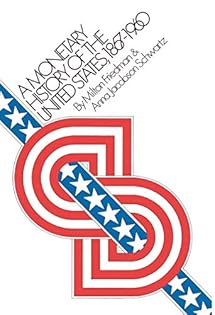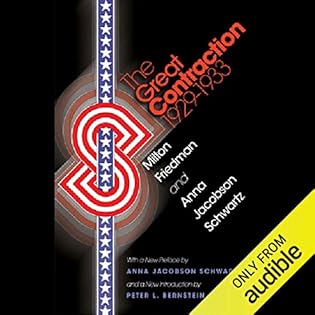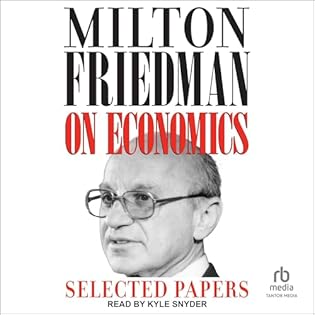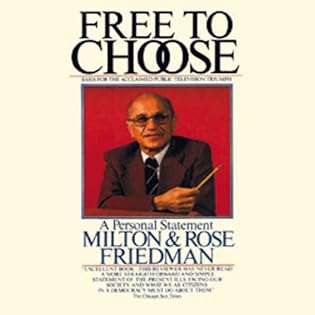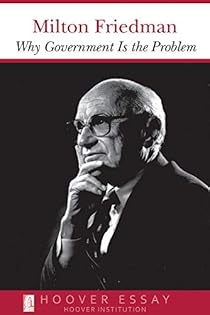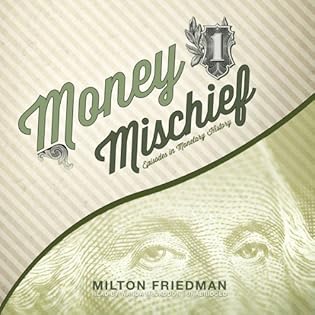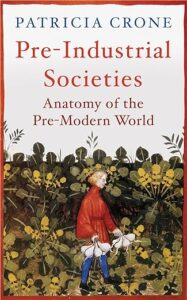The book is very broad in terms of its geographic and temporal scope. She draws examples from all of the major continents and over one thousand years of history. But she says that her standard description of pre-modern social orders is “largely based on the Old World civilizations from about 600 BC onwards, and it probably has a medieval bias.” (p. 170)
Crone’s thesis is that the preconditions for modernity included mechanized agriculture, energy-powered transportation, and long-distance communication. Without these, subsistence farming prevails rather than markets, long-distance trade is only in luxury goods, a common culture exists only among elites, and rulers have little contact with or control over the periphery of their domains.
- The fact that agriculture and manufacture alike produced little meant that all pre-industrial societies were dominated by scarcity… the inadequate nature of the means of transportation and communication meant that most people lived in very local worlds. (p. 21)
Social stratification was relatively simple.
- In some societies practically everyone was a peasant apart from the ruling elite, typically less than 2 per cent of the population. More commonly, some 10 per cent of the population were able to leave the production of food.
- … the contrast with industrialized societies is glaring. Only 2.9 per cent of the population is engaged in agriculture in France, and only 2 per cent in Japan; in early twenty-first-century USA the figure is down to 1.5, and the same is true of Germany. (p. 23)
Crone points out that pre-modern peasants produce primarily for themselves, for subsistence. Modern farmers produce primarily for the market, seeking profit.
Within a village, very little trade took place, mostly in salt and iron.
- … the pre-industrial world was characterized by a low degree of economic integration. Where subsistence economy prevailed, every household was more or less self-sufficient and every village largely or wholly independent of the next. (p. 42)
Only luxury goods that were worth carrying for long distances, or that could walk themselves, were traded, and these were consumed only by powerful elites.
The low level of labor productivity precluded a labor market based on wages and voluntary agreement. Instead, slavery, serfdom, and government conscription (not just for armies) were used to obtain workers.
Rather than differentiate workers by skill,
- All agrarian civilizations made heavy use of ascribed status, that is to say status attributed to a person on the basis of features over which he has no control, such as sex, colour or ancestry… descent rather than market forces determined who should do what (p.38)
In the pre-modern era, states were fragile, for a number of reasons. Agricultural societies were vulnerable to raiders, especially those on horseback.
- It was not until firearms were invented that civilization acquired a decisive advantage over its barbarian rivals (p. 47)
The weakness of states,
- … had its roots partly in scarcity and partly in the absence of modern means of transportation and communication. Scarcity meant that rulers rarely disposed of sufficient resources, or even very stable ones. They were chronically short of personnel and other infrastructure, and frequently unable to pay such personnel as they had.
- … Being short of personnel, rulers were unable to conduct regular population counts, land-surveys and other forms of inspection required for the regular reassessment of taxes (p. 49)
To use James Scott’s terminology, “seeing like a state” was difficult to afford. This was exacerbated by the primitive means of communication that were available.
- The vast majority of people continued to live in more or less self-sufficient villages with more or less autonomous cultures of their own, a fact which rendered the political unity of pre-industrial states precarious. (p. 51)
Pre-modern states had to rest on a narrow base of elite rulers.
- … the larger a group becomes, the more thoroughly the actions of its members have to be co-ordinated if it is not to disintegrate; and under pre-industrial conditions, large-scale co-ordination was impossible unless power was concentrated in the hands of a few. (p. 53)
The ruler’s control was tenuous.
- The government might issue decrees, but the implementation of these decrees rested with landed magnates, religious authorities, village councils, urban notables, guilds, tribal leaders, or kin groups of various kinds, or in other words with self-governing institutions and groups which might be in close or in loose alliance with the state or which might defy it altogether. (p. 57)
Because there was very little state capacity, many functions that we now associate with the state were performed by autonomous groups. Law and order were poorly maintained.
- Every town had its pickpockets, thieves, burglars, swindlers, murderers, assassins and protection racketeers, just as every road had its highwaymen and every sea its pirates. Private war and local feuds, riots and rebellion, marauding soldiers and brigandage, all these and other forms of disorder were commonplace in most societies most of the time. (p. 66)
Moreover,
- Few pre-industrial states had fixed borders, as opposed to vague frontier areas under the sway of local magnates, tribal groups, bandits or other unruly elements. (p. 77)
One can compare this to the model of North, Weingast, and Wallis. Their state is a “limited-access order,” in which the rights to form political and economic organizations are closely held by the members of a ruling coalition. This “natural state” is not in principle one of low state capacity, which sets it apart from Crone’s pre-modern state. Where NWW describe limited-access orders as stable, for Crone,
- … states were brittle structures which easily collapsed under internal stress or external pressure. The low degree of integration on the one hand and the minimal services performed by the state on the other meant that there was little to hold them together. (p. 70)
David Goodhart’s distinction between Somewheres (closely tied to local areas) and Anywheres (cosmopolitan elites) seems to hark back to the pre-modern era, as Crone describes it.
- The ruling elite had to be everything that the masses were not: where the masses were divided into a myriad of diverse communities, the elite had to be homogeneous and cohesive; and where the masses had a diversity of political interests which mostly had to be suppressed, the various branches of the elite had to have a common interest in serving, representing and perpetuating the state. The masses could not be integrated; the means simply did not exist to turn them into members of the same social, political, economic or cultural world. (p. 79-80)
The high cost of transportation meant that frequent travel was a luxury.
- Each village could thus remain a world unto itself while the elite developed a common culture over and above them. (p. 108)
There was no national culture. The masses were sub-national. The elites were super-national.
Crone says that a pre-modern ruler had to forge and maintain an alliance that included church leaders, educational institutions, and the wealthy. In particular,
- Mercantile wealth was accumulated outside the ranks of the ruling elite, from sources other than land, by means other than political service or mastery of the high culture (p. 85)
Thus, merchants were generally regarded as a threat. I would note that according to Deirdre McCloskey, overcoming the hostility toward merchants was a necessary step in creating the modern economy.
Religion could be a unifying force, because it was one of the few common cultural elements within a polity. But Crone also points out that by the same token many revolts took on a religious character.
Education was limited to the elite. But rulers needed to pay attention to educational institutions, because the elite were often the source of revolts.
There was no sense of exploration regarding knowledge.
- The belief that the truth was incarnate in the past also encouraged the view that knowledge was finite: everything had been said; everything could be mastered given sufficient time. (p. 103)
Crone says that people conceived of society in hierarchical and holistic terms. For the whole to function, each individual had to remain in his or her proper place.
- Society was holistic rather than individualistic (as sociologists put it): the individual existed for the benefit of the overall group, not the other way round. (p. 128)
Pre-modern societies had very different marriage patterns than what we are used to.
- If girls were not married off as children, they were usually provided with husbands as soon as they reached physical maturity. (p. 132)
Pre-modern societies also had a more central role for religion. Crone suggests as a possible explanation for this:
- Religions have been more popular in history than their atheist or non-theist counterparts, presumably because supernatural beings endowed with human feelings are easier to understand, love and obey than abstract concepts such as cosmic order, karma or proletarian struggle, which operate like machines without regard for their effect on human beings and which are hard to visualize. (p. 146)
Crone also points out that religion was important because of its influence on behavior. She writes,
- … hominids are forced to supplement their deficient genetic programming with culture; differently put, their genetic programming has stopped giving them specific instructions and started to give them general instructions to be inventive instead. What we invent, or in other words culture, is not an unexpected bonus of high intelligence, but on the contrary what our intelligence is for…
- Religion is part of culture; indeed, in primitive societies it is more or less synonymous with culture. Humans could be said to have religions precisely because they are dependent on culture for their survival. (p. 147)
Years after Crone wrote, Joseph Henrich, Michael Muthukrishna and others called this way of thinking about genes and culture “dual inheritance theory.” Crone further writes,
- … many cultural rules actually go against genetic instructions: there is no human society without extensive practice of self-control. (p. 151)
Religion helps to promote this self-control. Furthermore, it helps to glue a society together.
- … societies depend for their viability on the existence of value systems which command sufficient consent for a sufficient number of people to live together in accordance with their rules even when coercive attention is withdrawn. (p. 161)
“Why did Western Europe enter modernity before India, China, or the Islamic world? Crone says that this transition took place because unlike in those other regions, pre-modern institutions in Western Europe failed.”
Why did Western Europe enter modernity before India, China, or the Islamic world? Crone says that this transition took place because unlike in those other regions, pre-modern institutions in Western Europe failed. The stability that was preserved elsewhere was not maintained in Western Europe.
Western Europe’s pre-modern institution, feudalism, differed in some respects from the arrangements in other regions.
- … protection, access to land, social status and political power had all become negotiable assets acquired through agreement with whoever could dispense them rather than by birth into a particular family, lineage or tribe. (p. 178)
Also,
- … north-west Europe was or eventually became unique by its practice of delayed marriage for men and women: both sexes would postpone marriage until their twenties or even thirties…
- … it enabled Europe to escape the so-called Malthusian cycle.
- … Where marriage was delayed, men and women of peasant origin would typically accumulate their funds by working as servants (or so at least from the later Middle Ages onwards). Pre-industrial Europe is unique in that service came to be part of the life-cycle, and the prominence of hired servants in the household is the domestic counterpart to the prominence of feudal retainers in the political sphere: in both cases, recruitment was by contract rather than by kinship. (p. 178-179)
The relative independence of Western European peasants gave them more leverage. And their feudal lords had more leverage vis-a-vis their rulers.
- Feudalism amounted to an extreme dispersal of power along vertical lines. No agency had a monopoly on any governmental activity, let alone on the right to use force; taxes had entirely disappeared, the agricultural surplus being siphoned off purely in the form of rent to landlords
- … society was in an extremely strong position vis-à-vis the state even though it was no longer tribal. It shared with tribal societies the features of being ‘corporate’, that is composed of groups through which the individual acquired well-defined rights and duties; of being passionately defensive of liberty or ‘liberties’, both individual and collective; of being strongly imbued with a sense of reciprocity; and of possessing a leadership of its own as opposed to one imposed by the state. But it owed all of these features to contracts and charters as opposed to kinship on the one hand and to participation in the state as opposed to rejection of it on the other. (p. 182)
This was not a viable order.
- … the feudal solution was too primitive to endure… But kings had to recover their power from very local and very humble levels; they had to work for their money because they could not tax; and they had to bargain because their subjects were endowed with well-entrenched rights… [It was] the weakness of feudal kings which led to the development in Europe of representative institutions. (p. 183-184)
European rulers could not as easily tax land and agricultural products. So they had to tolerate the merchant class as another source of tax revenue. They could not arbitrarily exile merchants or confiscate their goods.
- European rulers were too dependent on subjects too well endowed with contractual rights to indulge in arbitrary fleecing, (p. 186)
Crone notes that Europeans had a penchant for technology. She speculates that,
- It was the failure of the European elite thoroughly to distance itself from the masses which made technology respectable… a state without money generated an aristocracy without manners and bearers of high culture without a proper disdain for flywheels and cranks, let alone for the uneducated men who put such things together. (p.197)
For more on these topics, see We think of the industrial revolution primarily in terms of its economic effects. But Patricia Crone’s book reminds us that the pre-modern world had a totally different cultural basis, including strict hierarchies and strong religious influence. It was an order based on social stability rather than prosperity. It was the collapse of this pre-modern order in Western Europe that ushered in modernity.

